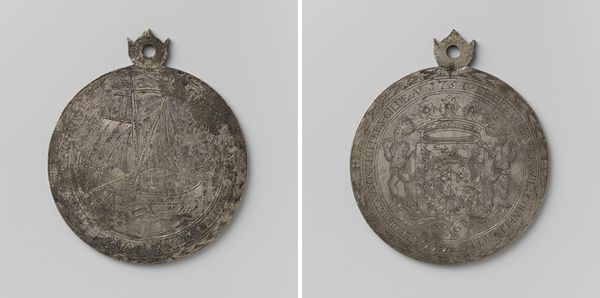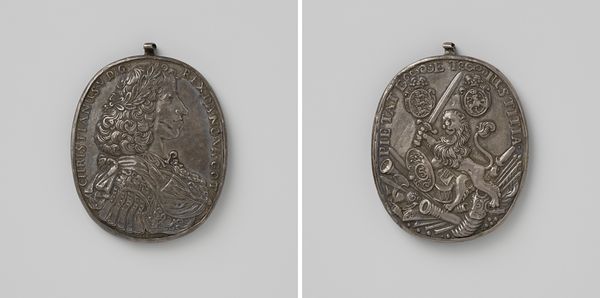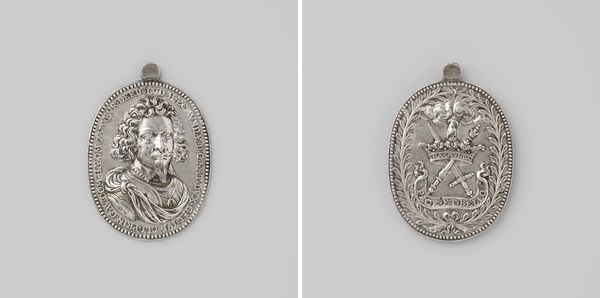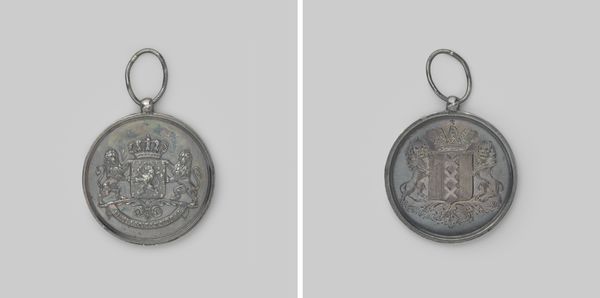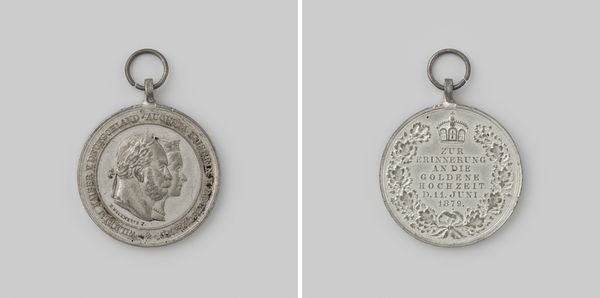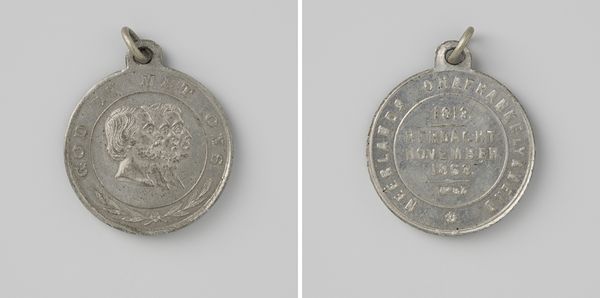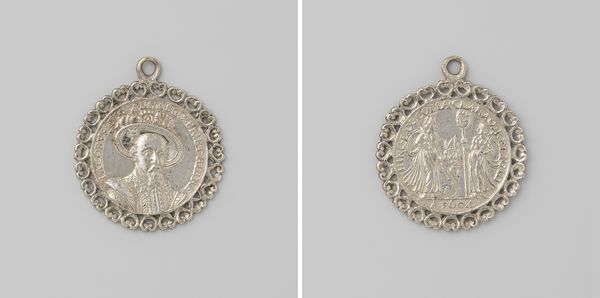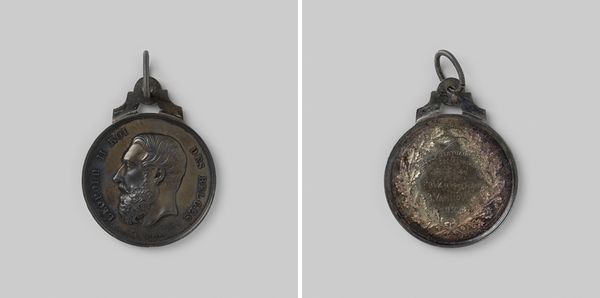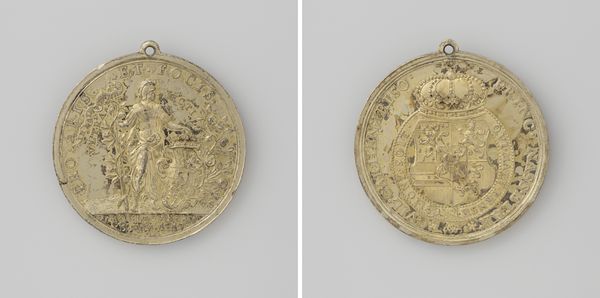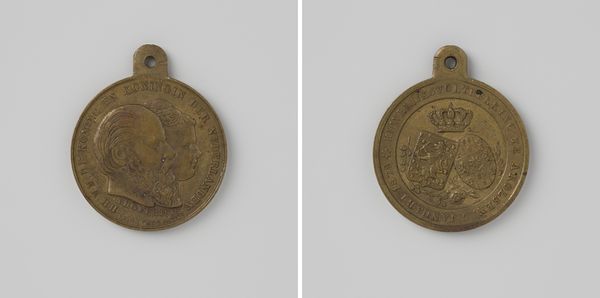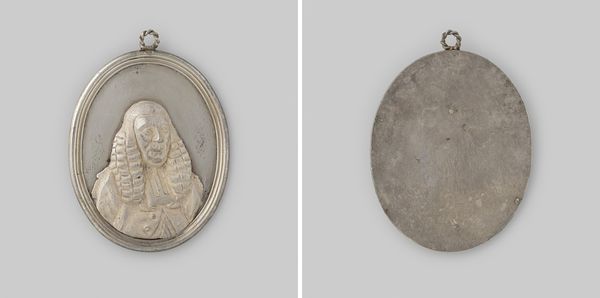
Derde eeuwfeest van het ontzet van Alkmaar, ter ere van Willem III, koning der Nederlanden 1873
0:00
0:00
metal, sculpture
#
portrait
#
metal
#
sculpture
#
history-painting
Dimensions: diameter 2.7 cm, diameter 2.3 cm, weight 4.71 gr
Copyright: Rijks Museum: Open Domain
Curator: This object, currently housed at the Rijksmuseum, commemorates the tercentenary of the Relief of Alkmaar, honouring William III, King of the Netherlands. Dating back to 1873, this piece falls under the category of historical commemorative medals and is composed of metal. Editor: Hmm. Visually, it's austere. Stark, even. That grey metal against a plain backdrop makes it feel like a forgotten artifact, yet the delicate engraving hints at something more grand. It almost feels like it is holding back a vibrant untold story. Curator: Precisely. The medal functions as a historical record. Its creation served to reinforce a national narrative around Dutch resilience and the veneration of its leaders. It reminds the public of pivotal moments of their collective memory. Editor: A potent reminder of power and perseverance cast in grey... a deliberate artistic statement? The almost faded impression definitely provokes questions about memory, remembrance, how things can get lost in time, and if stories can be properly remembered in a "correct" fashion. I can relate, to a time where I tried remembering my grandmother's tales and the memories ended up being so dull in my mind that I abandoned the attempt to capture the memories once and for all. Curator: The artistry serves political and social purposes here. Medals were commissioned by cities or national organizations to reinforce a sense of shared identity and patriotism, particularly during periods of political or social change. It acted as a propaganda device of the time. Editor: I see how these artifacts served as vessels for storytelling but also, the cold hard grey is, to me, representative of state-sponsored narratives, devoid of nuance and sometimes cold and calculating... Curator: Perhaps. The context of the piece is of significance in understanding these nuances: William the III reigned during a transformative period. Commemorative items played a critical role in projecting royal legitimacy. Editor: It’s incredible to think a little thing can carry such weight in public perception. Still, those stark visual qualities keep pulling me. They force the gaze inward. Curator: Exactly. The piece leaves us to consider both the tangible past and its reverberations through generations, as well as how it can create narratives for particular social outcomes. Editor: A cold object with complex implications... The kind of quiet, but loaded message that continues to subtly shift around in my thinking long after viewing it.
Comments
No comments
Be the first to comment and join the conversation on the ultimate creative platform.
